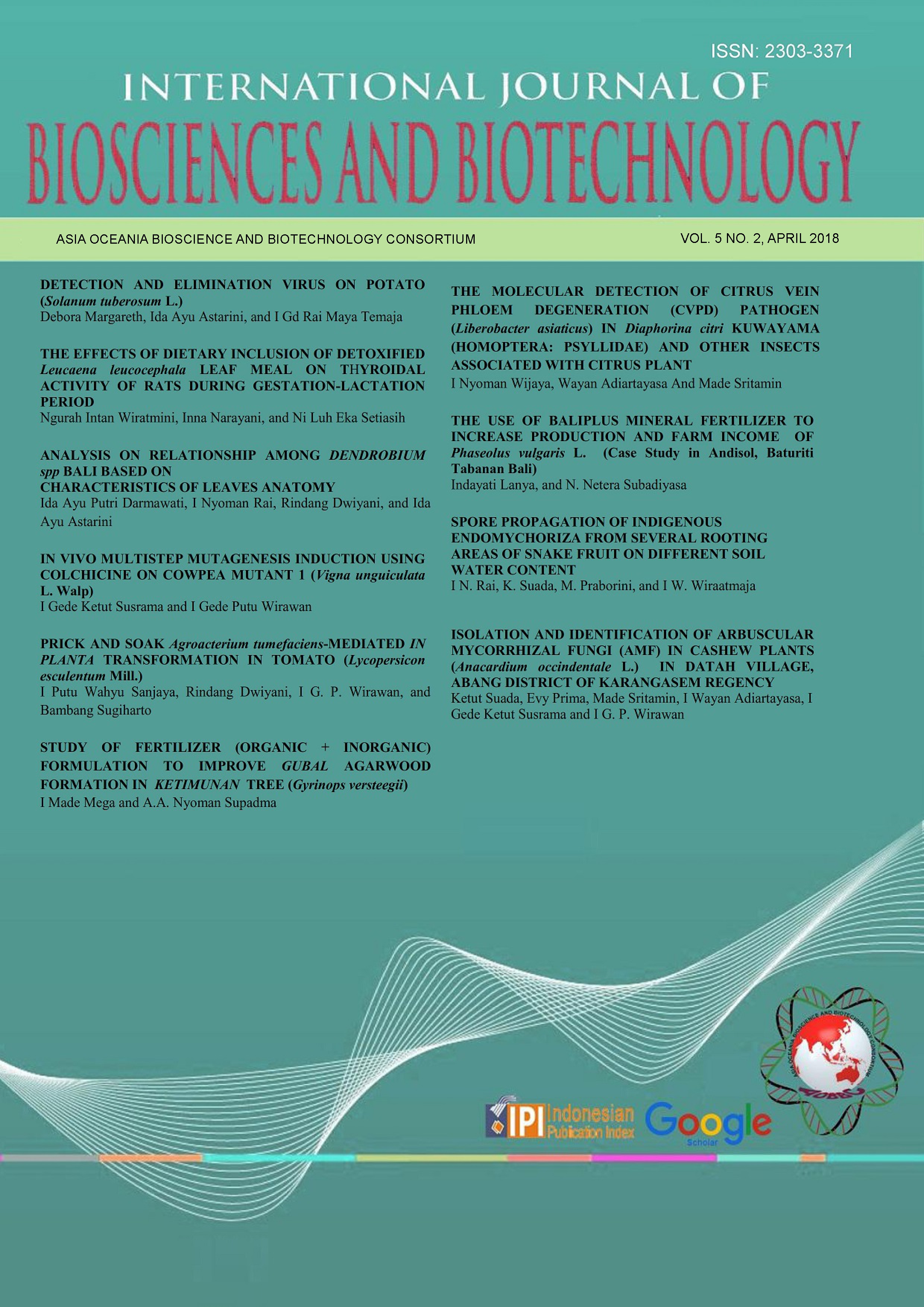SPORE PROPAGATION OF INDIGENOUS ENDOMYCHORIZA FROM SEVERAL ROOTING AREAS OF SNAKE FRUIT ON DIFFERENT SOIL WATER CONTENT
Abstract
Cultivation of organic snake fruit in Bali which is done on dry land with the irrigation depends on rainfall and the fertilization generally only uses uncertain amount of fallen leaves, it reduces the productivity, quality, and continuity of fruit production over time. In rhizosphere of snake fruit there are various types of indigenous endomycorrhiza that potentially can be developed as biofertilizer, but as a biofertilizer, the low number of spores population for inoculum becomes a limiting factor in using indigenous endomycorrhiza. The effort that can be done are to propagate the spores by giving water stress treatment. This study aimed to obtain the best rhizosphere location of snake fruit as the source of spores and the level of soil water content to multiply the spores. The research was conducted in the green House, Farm Station, Agriculture Faculty, Udayana University at Jalan Pulau Moyo, Denpasar, from October 2017 to January 2018. The spore propagation used nested experiment with Randomized Block Design patterns. The treatments were rhizosphere location as the source of indigenous endomycorrhizas spore consists of three levels (Bebandem District Karangasem Regency, Payangan District Gianyar Regency, and Pupuan District Tabanan Regency) and soil water content consists of three levels (100%, 70%, and 40% field capacity). The results of the research showed that the source of indigenous endomychorrizae from snake fruit rhizosphere in Payangan District gave the highest number of spores found and the highest percentage of the spore increase after propagation. While in the soil water content treatments, the highest number of spores found and the percentage of the spore increase after propagation were obtained at soil water content of 40% field capacity. The percentage of root infections from different sources of indigenous endomychorrhizae and different levels of soil water content is same i.e 100%.






